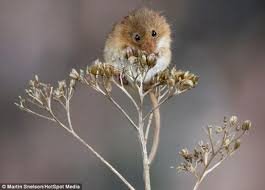**Implementing a Gradual Weight Loss Plan for Hairless Cats: A Gentle Approach to Feline Well-being**

Weight management is a crucial aspect of caring for hairless cats, and a gradual approach can be particularly beneficial for their well-being. In this article, we’ll explore the importance of implementing a slow and steady weight loss plan for hairless cats, ensuring a gentle and sustainable journey to a healthier weight.
**1. **Consult with a Veterinarian:**
Before embarking on a weight loss plan, consult with a veterinarian. They can assess your hairless cat’s current health status, determine an ideal weight goal, and provide guidance on a suitable and gradual weight loss strategy.
**2. **Set Realistic Goals:**
Establish realistic weight loss goals for your hairless cat. Aim for a gradual reduction in weight over time, as rapid weight loss can have adverse effects on their health. Realistic goals promote a sustainable and healthy weight loss process.
**3. **Portion Control:**
Practice portion control as a foundational element of the weight loss plan. Measure your cat’s food portions to avoid overfeeding and to ensure they receive the appropriate amount of calories necessary for their gradual weight loss journey.
**4. **Choose a Balanced Diet:**
Select a well-balanced diet tailored to your hairless cat’s nutritional needs. A diet rich in high-quality proteins, moderate in fats, and with controlled carbohydrates can support their overall health while facilitating weight loss.
**5. **Incorporate Interactive Play:**
Encourage regular and gentle exercise through interactive play. Engage your hairless cat in play sessions using toys that stimulate movement and capture their interest. Gradually increase the duration and intensity of these play sessions as their fitness improves.
**6. **Implement Slow Changes:**
Introduce dietary changes gradually. Sudden changes to their diet can lead to stress and resistance. Slowly transition to the new diet to allow your cat’s digestive system to adapt, making the weight loss process more comfortable for them.
**7. **Monitor Weight and Adjust Accordingly:**
Regularly monitor your hairless cat’s weight and adjust their diet accordingly. Track their progress, and if weight loss is slower than expected, consult with your veterinarian to make necessary adjustments to the weight loss plan.
**8. **Provide Emotional Support:**
Offer emotional support throughout the weight loss journey. Changes in diet and routine can be challenging for cats. Provide comfort, positive reinforcement, and affection to ensure a stress-free environment during their gradual weight loss.
**9. **Hydration is Key:**
Ensure your hairless cat stays adequately hydrated. Proper hydration supports their overall health and can contribute to a feeling of fullness, assisting in weight management. Consider wet or moist cat food to boost their water intake.
**10. **Regular Veterinary Check-ups:**
Schedule regular veterinary check-ups to assess your cat’s overall health and monitor their progress. Veterinary guidance is invaluable in ensuring that the weight loss plan remains safe and effective for your hairless cat.
**11. **Celebrate Milestones:**
Celebrate small milestones along the way. Acknowledge and reward your hairless cat for their progress, reinforcing positive behavior and making the weight loss journey a positive experience for them.
**Conclusion:**
A gradual weight loss plan for hairless cats combines thoughtful nutrition, portion control, and gentle exercise. By setting realistic goals, making slow adjustments, and providing emotional support, owners can contribute to their cat’s well-being while achieving a healthier weight. Always work closely with a veterinarian to tailor the weight loss plan to your hairless cat’s individual needs.


